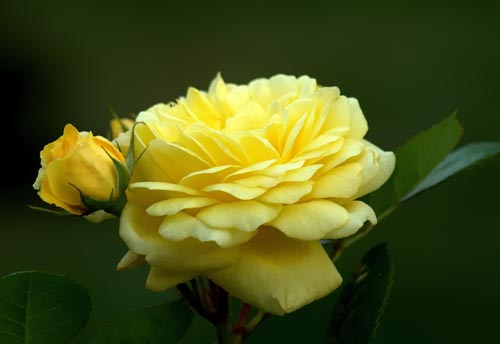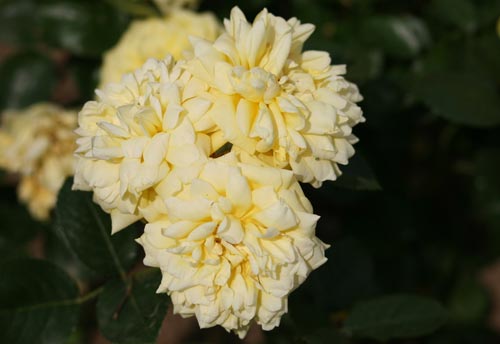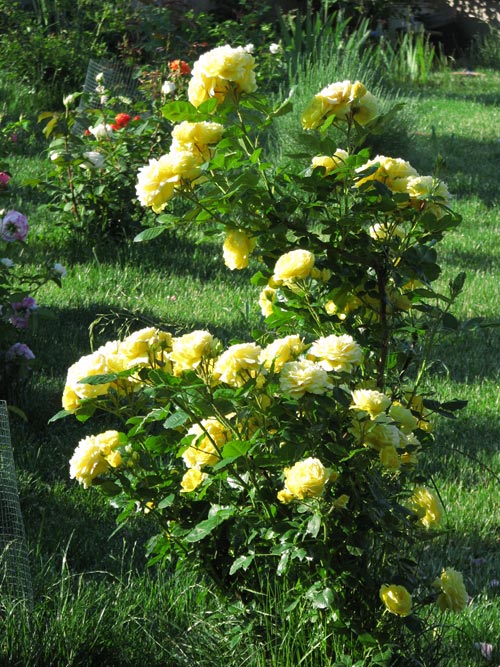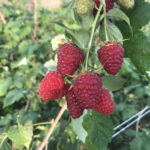Rose Annie Duperey
Who doesn't want to give their garden a touch of French charm and sophistication! This natural desire for every gardener will help to bring to life our current heroine, the unsurpassed "Frenchwoman", the rose "Annie Duprey". Let's talk about it!

Biography of a beautiful stranger
This variety of park roses, belonging to the group of tall floribundas, was presented to the world by the famous French nursery company Meilland International.
Interesting! The company is a recognized grandee, a classic of European selection. In particular, in 1935 she released the Gloria Dei variety, which is often called the most famous rose of the past century. This flower was once brought to the Hall of Fame of the World Federation of Pink Societies forever.
But we are a little distracted! So, the variety was created in 2006, and although its original registration name sounded like "Meitongas", it was later changed to "Anny Duperey" - in honor of the popular French woman, writer and actress, known for her sensual stories and roles.
In 2008, at an exhibition in Germany, the variety received the ADR award for external qualities and resistance against diseases.

Description of appearance
It looks like a large bush about a meter high or a little more, about a meter wide. Leaves are medium to large, dark green, dense and shiny. The shoots are strong, thick, the shape of the bush is usually symmetrical, beautiful.
But, of course, the main decoration of this rose is its flowers! By the way, there are so many of them on the bush that the foliage we just talked about is barely visible! Each individual flower is an amazing combination of perfect shape, color and scent. The diameter of the flower is from 8 to 10 cm, it consists of many (sometimes up to 80!) Small, densely planted petals.
The color of the petals is predominantly yellow, with the addition of cream and lemon shades. In the evening, when the sunlight becomes subdued, the flower reveals a slight silvery reflection.
The shape of the bud also makes you admire: it is surprisingly symmetrical and dense, reminiscent of classic vintage roses. To match all this abundance and smell: strong enough, thick and refined, with hints of lemon and bergamot.

Flowers are located on branches in groups of 10-15 pieces each. The flowering process is remontant, lasting several months in a row. A bright lemon-yellow cloud - this is how the Annie Duprey bush looks all these months.
Features of agricultural technology and use
To all the listed advantages, we can safely add others of a "technical nature". The variety is unpretentious, resistant to stress and disease (remember the German ADR award, which is given primarily for unpretentiousness and resistance). Particularly immune to powdery mildew and black spot. It can survive frosts down to -20 ° without shelter (with shelter up to -30 °). According to the US Department of Agriculture (USDA), cultivation is possible in zones 6 through 9, inclusive.
In landscape design, this rose can be used in many ways. It looks great as a specimen plant, decorating a corner of the garden. Combines with the green of the lawn, will not be superfluous in a group planting, especially in the vicinity of conifers and white roses. It is also popular as a cut flower, retains freshness in a vase for a long time, moreover, filling the room with its exquisite aroma.
Summing up, we can say that "Annie Duprey" is intended to serve as an example of a rose, which has almost no flaws, but a great many advantages! Even an inexperienced gardener can decorate his plot with this beautiful flower, giving him quite a bit of time and skill, but receiving in return real French sophistication!









Annie Duprey's flowers are not warm, but a cold shade of lemon.The scent is a mixture of pink perfume and citrus. I wouldn't call it strong. Move one and a half to two meters away from the bush - and it is already barely perceptible. The variety is loved for its abundant and very early onset of flowering. Of all my roses, this one starts first in mid-May. And it blooms in such waves that the leaves are not visible under the lemon-lush bouquets. However, in the hot sun it fades to white. And all would be fine, but these roses do not fly around. They dry up to brown, forcing you to walk with scissors and cut out the faded ones from the brush. And the citrus scent attracts all existing eaters to this rose, starting with flower beetles. Aphids simply adore the soft and tender young leaves of Annie Duprey. But no diseases stick to her.
To be honest, I don’t even know how to write about a rose so as not to accidentally scare away a person who wants to buy a seedling ... The rose is very, very beautiful - it has abundant (flooded) flowering, it lasts from mid-spring and ends in late autumn, flowers perfect shape, with a delicate and unobtrusive aroma. But in my climate (I repeat - in my!), The plant is bad - the flowers quickly fade, losing all their attractiveness, they do not fly around, but mummify, turning the bush into a miserable sight, the rose hibernates badly. I really like the variety, but I decided to part with it, as I believe that it is suitable for growing in regions with cooler summers and milder winters.